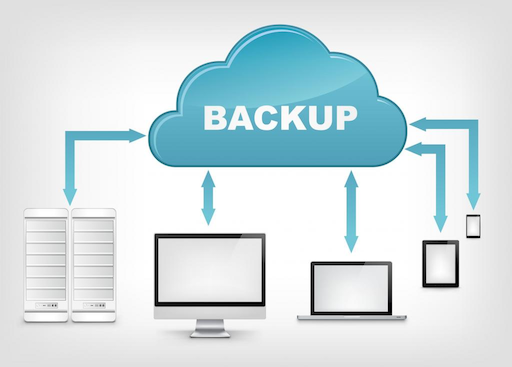Many years ago, people had the luxury of writing important stuff on stone tablets. However, today's requirements and recommendations are very different. So what’s the recommended method to keep your bits crisp for centuries?
It’s easy to think of data preservation as something big companies or important people need to worry about, but what if you have information that you’ll need ten years or even fifty years from now? What if you need to preserve information somewhere for someone 100 years or more in the future?
For various reasons, you might need to hold onto data for a long time. Maybe you have some old documents or records that you’d like to pass down to future generations, or perhaps you need to keep financial records and other necessary paperwork around for legal reasons. Even if you’re trying to preserve your personal memories, like photos or videos, you’ll need to figure out a way to store all that stuff.
The key to preserving data over the long term is finding a storage format you can trust to last. This could mean using physical storage methods, like high-quality paper or film designed to last a long time, or digital storage options, like cloud storage or external hard drives.
The Challenges of Storing Digital Data for Decades or Centuries
If you’re thinking about storing digital data for the long term, there are several challenges you should be aware of.
First, digital storage media like hard drives and SSDs (solid-state storage devices) can degrade over time and eventually fail. That means you must keep making new copies of long-term data before your storage devices fail.
Another challenge to consider is file format obsolescence. Some file formats may become outdated or incompatible with newer software as technology advances. That means even if your storage media survives, there may be no drives to read it, and even if there are, the details of the file formats you used to store that data might be lost.
Why Mechanical Drives Fail (and What You Can Do About It)
On the other hand, every time you migrate your current data to a newer format to preserve it for a few more years, it might degrade in some way that won’t become apparent until someone tries to access it someday.
Hackers, malware, and natural disasters can all threaten your stored data, so it’s important to implement strong security measures to protect your information and to store the media in an environment that’s both safe for that media and offers long-term stability.
Cold Storage vs. Hot Data
In data storage parlance, “cold” storage refers to how rarely accessed data is stored. This is usually data kept for compliance or other necessary record-keeping irrelevant to day-to-day business.
Cold storage is usually kept offline, and the media holding the data is stored in a powered-off state or separately from the drives that can read the relevant press. If data is kept in cold storage, this can affect how long it will last.
“Hot” data is always accessed and is usually stored in media that’s always accessible and powered on. As you might expect, these media wear out through daily use, so archival data and backups aren’t a good fit.
The Best Long-Term Digital Storage Media
 Archival-grade optical discs, such as M-DISC, are designed specifically for long-term data storage. They use a special type of data layer made of materials that are resistant to degradation over time, including UV light and moisture. Two factors are commonly responsible for “disc rot.” These discs can last for up to 1000 years or more—at least that’s what the various manufacturers claim. Obviously, it’s impossible to actually test this claim, but they can make an educated guess through testing.
Archival-grade optical discs, such as M-DISC, are designed specifically for long-term data storage. They use a special type of data layer made of materials that are resistant to degradation over time, including UV light and moisture. Two factors are commonly responsible for “disc rot.” These discs can last for up to 1000 years or more—at least that’s what the various manufacturers claim. Obviously, it’s impossible to actually test this claim, but they can make an educated guess through testing.
Magnetic tape has been used for decades as reliable long-term data storage. It’s highly durable and can withstand extreme temperatures and humidity. It’s also relatively inexpensive compared to other options.
Generally, magnetic tape stored in cold storage with stable temperature and humidity conditions can last for up to 30 years or more, while some high-quality magnetic tapes can last for up to 50 years or more.
However, magnetic tapes need specialized equipment for reading and writing data. That machinery might not last as long as you need it to since a tape drive is a complex mechanical device.
Mechanical hard drives have been used for decades as primary storage for computers. They’re reliable, fast, and relatively inexpensive.
That said, they’re not designed for long-term storage, and the average lifespan of a hard drive is as little as 3-5 years. If you choose to use HDDs for long-term storage, you should regularly back up your data and replace the drives every few years.
SSDs are faster and more reliable than HDDs, but they are more expensive and not designed for long-term storage, and the average lifespan of an SSD is around 5-10 years. If you use SSDs for long-term storage, you should also ensure that you regularly back up your data and replace the drives every few years. If the SSD isn’t powered on periodically, it can still suffer from data loss as electrical charge leaks from its memory cells.
The last option is cloud storage, which puts the responsibility of keeping your data safe in the hands of a third-party company like Google or Microsoft. These companies have to conform to data storage standards to make sure your data is safe, but it’s not really an option for truly long-term storage because there’s no guarantee the company in question will still be around in ten, twenty, or fifty years.
So what is the best option for storing data for years and years? The answer is simple: LOCKSS
The LOCKSS Program at Stanford University Libraries provides open-source technologies and services for high-confidence, resilient, secure digital preservation.
The abbreviation is simple: LOCKSS is an acronym for "Lots Of Copies Keeps Stuff Safe."
Stanford University Libraries provides hardware and software to help you set up, integrate, and manage LOCKSS technologies, to reach your digital preservation goals. See https://www.lockss.org/ for the details. However, private individuals can create their own implementation of the LOCKSS philosophy.
In short, an individual may create his or her own LOCKSS system simply by copying (making backups) data to multiple storage devices that are located in multiple locations.
So which is best: floppy disks, optical disks, hard drives, SSDs, or cloud storage? The answer is: YES. All of those methods.
In fact, don't select any one method of making backups. Instead, use several different devices and (perhaps most important of all) several diffrent locations and even different computers to store the backups.
Suggestion: Keep a copy of all information tobe backed up on an external hard disk that plugs into a USB port on a computer at home, another backup on a similar computer at the office or at school, to a CD-ROM disk (or better yet to a Blu-Ray disk) kept at a relative's house, and also to 2 or 3 backup services in the cloud that are locate in different countries on different continents.
In case you need to retrieve your valuable data, at LEAST ONE of those copies will still be readable in future years.
Of course, just to be totally safe, you will want to copy those backed up copies to new drives every few years.
You can never have too many backup copies!
 Latest News Articles
Latest News Articles If you do not see a Plus Sign that is labeled "Add comment," you will need to upgrade to either a (FREE) Standard Edition or a (paid) Plus Edition subscription
If you do not see a Plus Sign that is labeled "Add comment," you will need to upgrade to either a (FREE) Standard Edition or a (paid) Plus Edition subscription